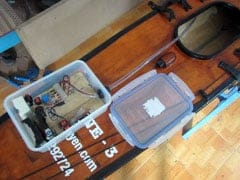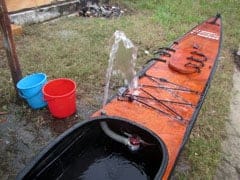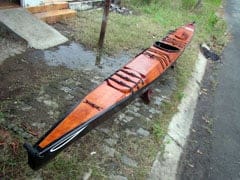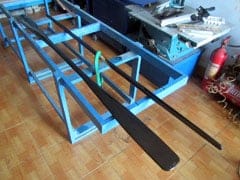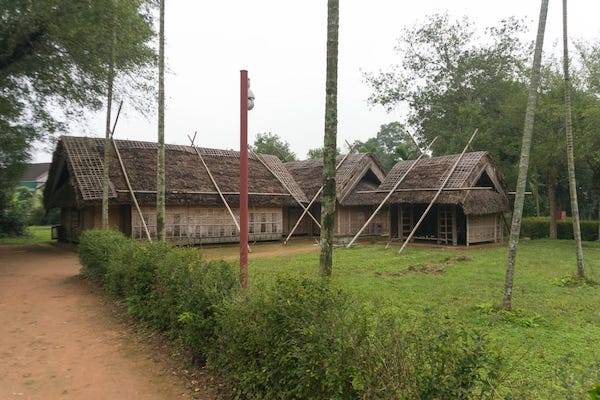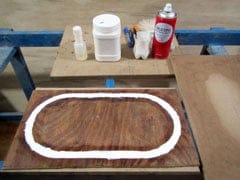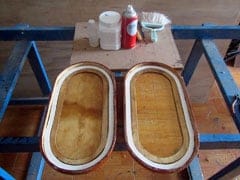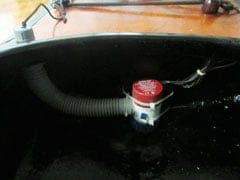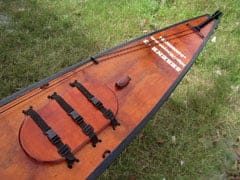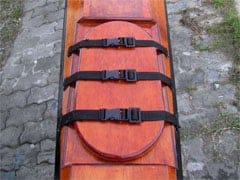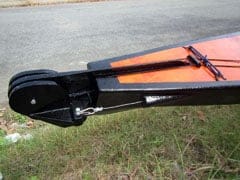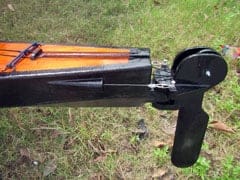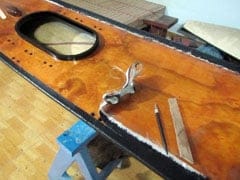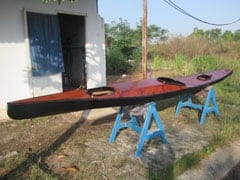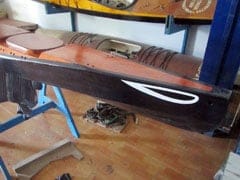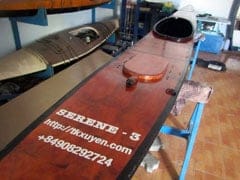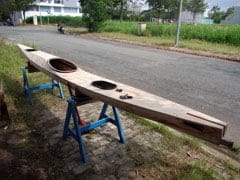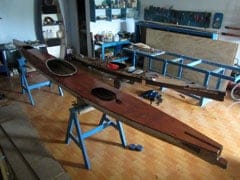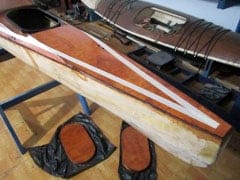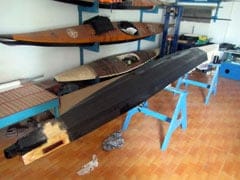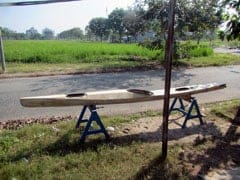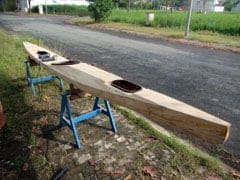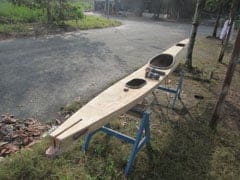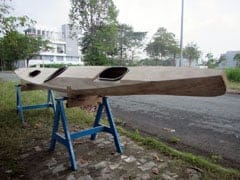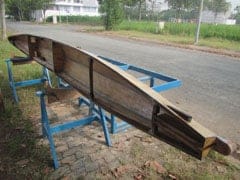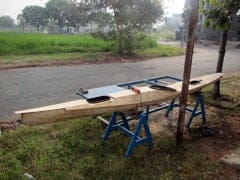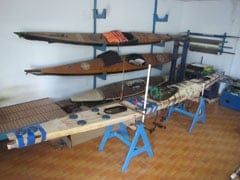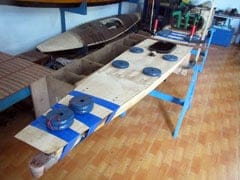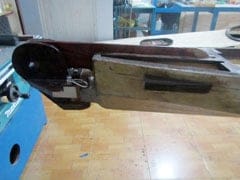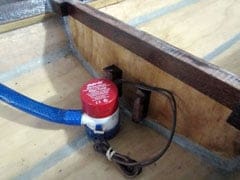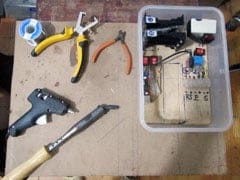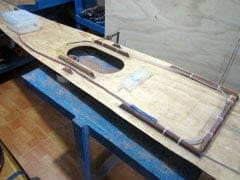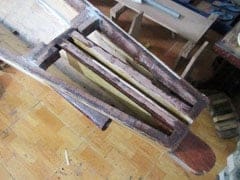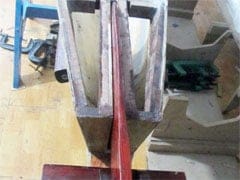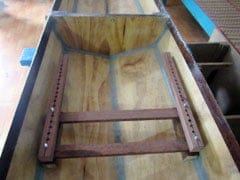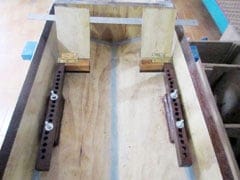Almost ready for the water, but the tide is unfavorable for the weekend (its heights are at night), and the Tembin cyclone is crossing the East sea, threatening the area. So I take the time to complete a couple more things. Attaching the electric box through cable gland is quite straight forward, everything works out right, in essence the bilge pump and reed switch. I added one master switch to the electric circuit, in order to turn everything off and not to drain the 18650 batteries to exhaustion.
One critically important issue with the 18650 batteries is that, never used them to exhaustion, when the voltage drops below 1 ~ 1.5 V or so, the battery just becomes dead, you simple could just throw them away, a costly lesson the last time I hadn’t paddled for some weeks, and let the batteries run until dead 😢. Next, I “refurbish” one of my old paddles to match the new boat style, turning it to black, and make it a bit stronger (and slightly heavier) with an extra layer of fiberglass.
The paddle was specially built from rattan and balsa wood, and is light enough already at 0.8 kg. I would try to use this paddle first, before deciding if it’s necessary to make an extra new one, weight and durability are two major concerns. Third image: a “smoke test” to verify if the bilge pump and the solar panel all properly works. Now wait out for a few more days before going to water, just some 10 ~ 12 km of paddling, to see how the kayak behaves, how everything would feel out there.

